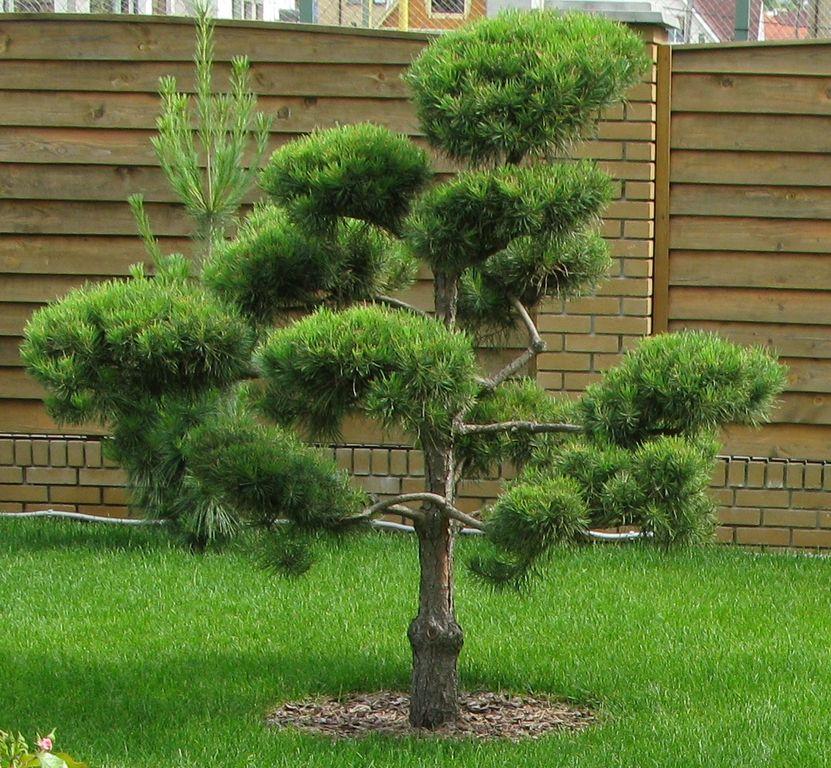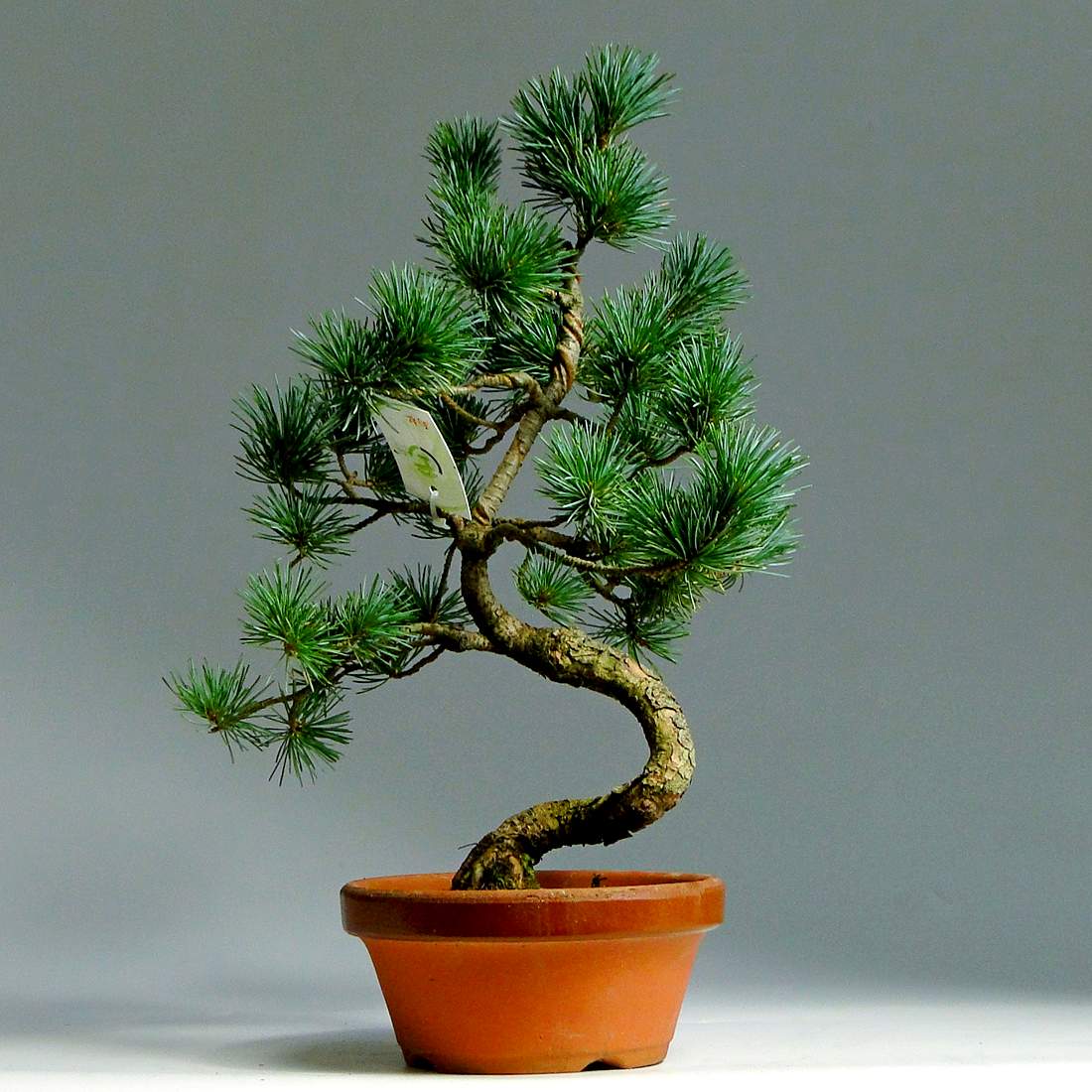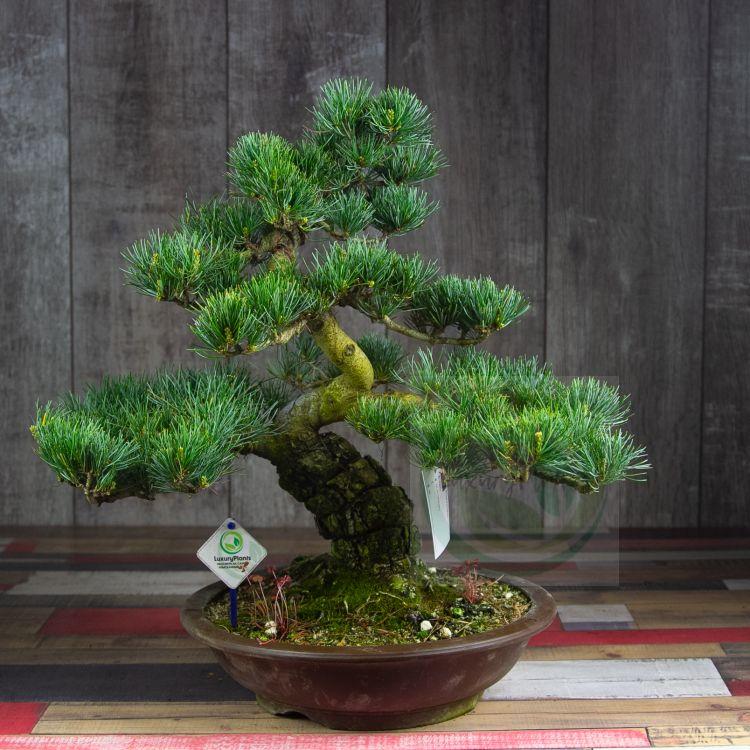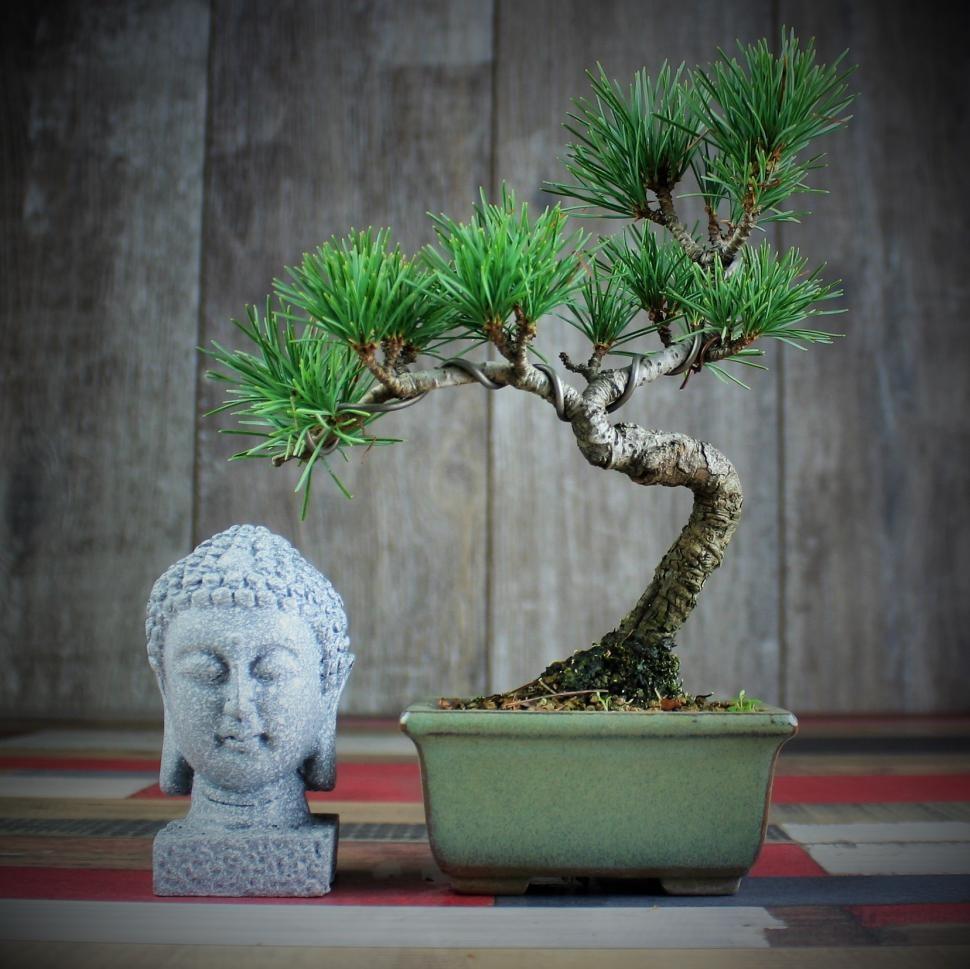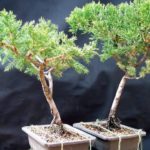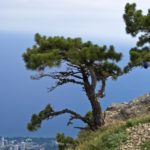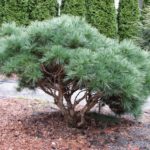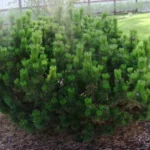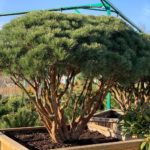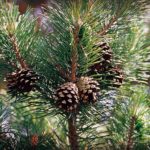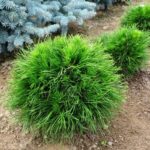Bonsai is an oriental art of landscape design, the standard version of which is the cultivation of a small pine tree. Flower shops often sell already formed trees in pots. However, growing pine bonsai with your own hands is considered an interesting activity. To achieve success in this matter, it is important to follow a number of rules.
What varieties are suitable
Miniature bonsai style trees are reproductions of plants that occur naturally.In Japan, this technique is considered a true worldview that combines the physical and spiritual sides. In Russia, such trees began to be grown not so long ago. Most often, pine trees are used for this purpose. They are great for creating unusual shapes.
Making a bonsai requires patience and the necessary knowledge. The tree is formed according to special rules:
- the trunk needs to be made strong and impressive - the presence of a compacted support and a rhizome protruding from the ground is of great importance;
- Pine trees usually have few branches - but it is important that they harmonize with each other and give the tree a unique appearance;
- to give a pine shape, one of 15 standard samples is usually chosen.
The outline of the bonsai should be similar to the crop that grows in natural conditions. When growing a tree, it is important to slow down its growth. To obtain a bonsai, 4 main types of pine trees are usually used.
Japanese black pine
Most often, bonsai are made from Japanese black pine. Subject to the rules of agricultural technology, this crop has beautiful bark and easily tolerates even the most difficult conditions. Its cultivation does not require a specific soil composition or a high content of nutrients.
In Japan, many fans of the art of bonsai grow plants in this style from black pine. They call it a tribute to the origins of ancient art. At the same time, growing Japanese black pine in the bonsai style is associated with some problems:
- the tree may grow needles that are too long - the reason may be the wrong choice of planting site, violation of the rules of watering or fertilizing;
- the plant develops slowly - this is considered its biological feature.
Black pines are considered undemanding plants. They can withstand even adverse conditions and are able to survive in barren, rocky soil. This variety has a number of differences from Scots pine. It is characterized by dark gray-green needles measuring 7-15 centimeters and purple-gray bark. As the tree develops, it becomes covered with cracks, which makes the crop look like rock.
mountain pine
This variety of pine is distinguished by its unique properties. This is a hardy tree that can withstand adverse climatic factors and temperature fluctuations. In this case, the plant does not change the color of the needles.
Mountain pine can withstand severe frosts and heat. If you follow the rules of agricultural technology, the plant produces dense and beautiful needles. It is characterized by dense branches that can be trimmed and shaped in a variety of styles. The young culture has a purplish hue. During the flowering period, decorative flowers of a soft purple color appear on the plant.
Scots pine
This plant is considered the simplest and most pliable variety. Forming it into a bonsai with your own hands is not difficult. The plant easily takes any shape and retains it perfectly.
Scots pine is native to Northern and Western Europe. It is characterized by paired needles of blue-green or yellow-green color. Their length reaches 5-7 centimeters.As the tree ages, the bark acquires a scaly structure and a reddish-brown hue.
Japanese white pine
This crop looks unusual and is distinguished by unique white needles. That’s why it is often grown in summer cottages. Sometimes such a plant is grafted onto the trunk of a black pine tree. The white variety has a conical or columnar shape. It often has a spreading crown.
White pine comes from Japan. Its needles reach a length of 2-6 centimeters. At the same time, the needles have a dark green color. From the inside it has a white-blue tint.
Instructions for forming a tree
Pine is one of the most difficult trees to grow in the bonsai style. This is due to the fact that the principle of its pruning differs from the formation of other types of plants. This situation is due to the fact that most crops develop throughout the season. At the same time, they form new leaves and shoots. Pine, on the other hand, experiences one growth spurt, which occurs in the second half of spring.
When growing a crop on a plot, it is important to consider that it has its own growth zones. Their characteristics affect the intensity of pruning. In this case, the tree is characterized by the following zones:
- Zone 1 is considered the most active. Its shoots develop more quickly and actively than others.
- Zone 2 – characterized by medium strength.
- Zone 3 is characterized by the least activity.
It is important to consider that the formation of a bonsai pine tree is required from a very early age. The trunk of an old pine tree is almost impossible to bend. This will cause it to simply break.
Pine trees respond well to pruning, but it must be done carefully. The procedure is performed maximum once a year. It is important to consider that pruning should not be too radical.Otherwise, there is a risk of culture destruction.
It is recommended to prune pine trees in the fall. This will help reduce juice loss. If it is necessary to completely remove the branch, the manipulation should be carried out in early spring. Thanks to this, the damage will heal faster. It is recommended to treat and seal all areas injured during the procedure.
The formation of pine must be done using wire. However, there are different versions regarding the beginning of this manipulation. Some gardeners believe that the procedure should be performed in late autumn or winter, when the tree is characterized by the least activity. Other summer residents are sure that it is better to do the formation in the summer. In this case, any damage can be easily eliminated, since the tree is in the development phase.
But this theory has certain shortcomings. The fact is that during the period of active development, pine branches can quickly thicken. When applying wire in the spring and summer, there is a risk of getting a damaged trunk in the fall. If you carry out the procedure in the fall, it is permissible to leave the frame on the tree until the next season.
You also need to pay attention to the following cultural fragments:
- Buds - in spring, groups of buds form on the shoots. To achieve the correct direction of development of the tree, unnecessary fragments should be pinched. It is important to remember the growth zones. It is recommended to leave the most developed buds on the lower shoots. In this case, the least developed buds should be present below.
- Candles - with the arrival of spring, the abandoned buds are drawn into candles. Their length should also be adjusted, taking into account growth zones. At the top, pruning is carried out more harshly than at the bottom.A bonsai pine tree may react poorly to all the candles being pruned. Therefore, this process lasts for 15-20 days.
- Needles – when growing crops using this technique, plucking of needles is carried out. This makes it easier for sunlight to reach the internal shoots. It is permissible to begin thinning needles in the second half of summer. The procedure is carried out before the onset of autumn. In order to uniformly green all the branches of the tree, it is important to pluck out the needles on the most pubescent shoots from above. In this case, the plant will direct energy to the growth of needles from below.
Some varieties of pine trees require pruning of the needles, which will help give the tree a decorative appearance. In this case, you need to allow the plant to fully grow needles, and cut them off completely in August. The plant will certainly grow new needles, but they will be much shorter.
Aftercare
The main condition for growing any small plants in the garden is sufficient illumination. In shady places, the needles turn out to be too long, which negatively affects the appearance of the bonsai. Lack of light can cause shoots to die. In addition, this culture absolutely cannot withstand drafts.
Watering and fertilizing
The tree needs restrained but systematic moisture. It is important to take weather conditions into account. In the summer, pine bonsai are mainly watered once a week. In winter, the crop needs scanty moisture, which helps stop its development.
It is recommended to feed the plant with both mineral preparations and organic matter. For this purpose, nitrogen and phosphorus preparations are used. It is permissible to use humus or compost from organic products.
Transfer
It is recommended to replant pine trees in early spring.This is done until the buds swell. It is important to leave some soil on the roots, since it contains many useful elements.
Reproduction methods
The crop can be propagated by seed or cuttings. In the first case, the cones should be collected at the end of autumn, and the seeds should be planted in early spring. Cuttings are considered a more difficult propagation method, since the shoots do not take root well.
The pine bonsai is a beautiful plant that is often used to decorate various spaces. For crop cultivation to be successful, it is important to follow a number of rules.

